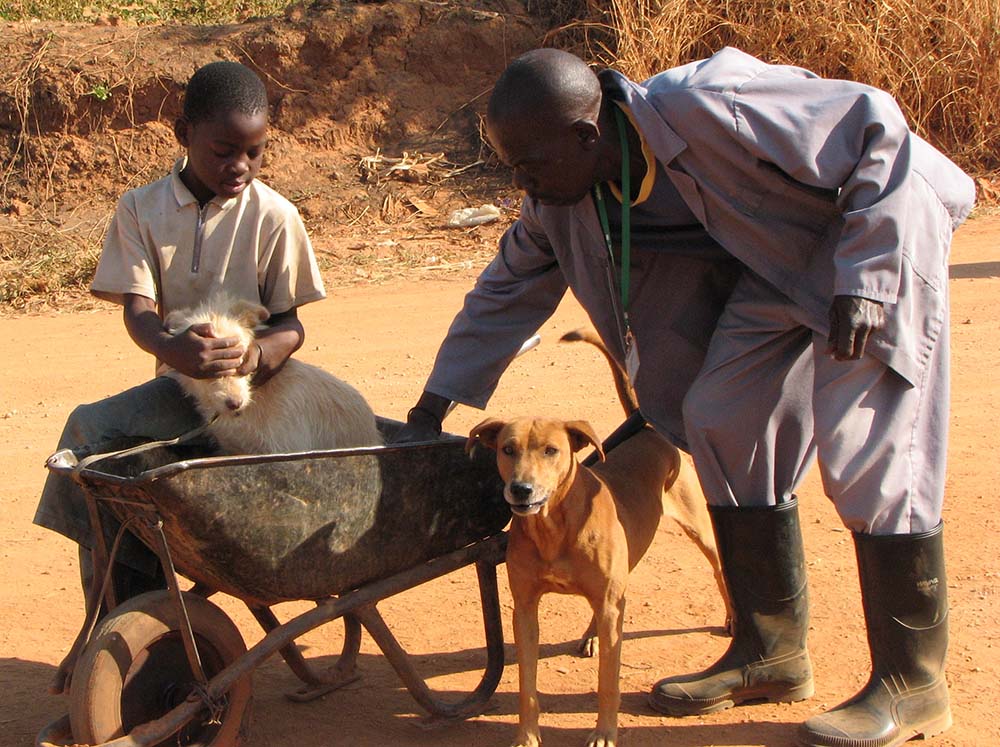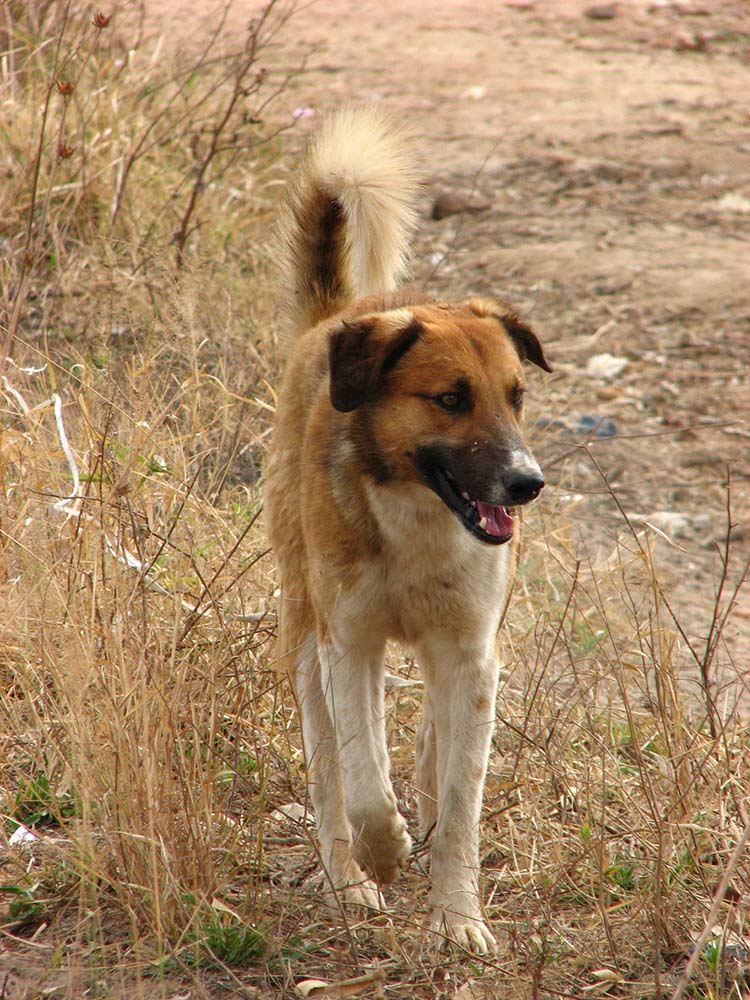- Home
- Magazines
-
Newsletters
- 19 July 2024
- 12 July 2024
- 5 July 2024
- 28 June 2024
- 14 June 2024
- 7 June 2024
- 31 May 2024
- 24 May 2024
- 17 May 2024
- 10 May 2024
- 3 May 2024
- 26 April 2024
- 19 April 2024
- 12 April 2024
- 22 March 2024
- 15 March 2024
- 8 March 2024
- 1 March 2024
- 23 February 2024
- 16 February 2024
- 9 February 2024
- 26 January 2024
- 19 January 2024
- 12 January 2024
- 22 December 2023
- 1 December 2023
- 24 November 2023
- 10 November 2023
- 3 November 2023
- 27 October 2023
- 20 October 2023
- 13 October 2023
- 6 October 2023
- 29 September 2023
- 22 September 2023
- 15 September 2023
- 8 September 2023
- 25 August 2023
- 18 August 2023
- 11 August 2023
- 4 August 2023
- 28 July 2023
- 21 July 2023
- 14 July 2023
- 7 July 2023
- 30 June 2023
- 23 June 2023
- 15 June 2023
- 2 June 2023
- 26 May 2023
- 19 May 2023
- 12 May 2023
- 5 May 2023
- 28 April 2023
- 21 April 2023
- 14 April 2023
- 6 April 2023
- 31 March 2023
- 24 March 2023
- 17 March 2023
- 10 March 2023
- 3 March 2023
- 24 February 2023
- 17 February 2023
- 10 February 2023
- 3 February 2023
- 27 January 2023
- 13 January 2023
- 22 December 2022
- 15 December 2022
- 9 December 2022
- 2 December 2022
- 25 November 2022
- 18 November 2022
- 11 November 2022
- 4 November 2022
- Advertising
- Subscribe
- Articles
-
Galleries
- AOSH Firexpo 2024
- Midvaal Fit to Fight Fire 2024
- WoF KNP 2023 Gallery
- TFA 2023 Gallery
- DMISA Conference 2023
- ETS 2023 Gallery
- Drager Fire Combat and Rescue Challenge 2023
- AOSH Firexpo 2023
- Midvaal Fit to Fight Fire
- WC IFFD 2023
- NMU 13th Fire Management Symposium 2022
- JOIFF Africa Conference 2022
- ETS 2022 Gallery
- TFA 2022 Gallery
- IFFD 2018
- SAESI
- TFA
- WRC 2018
- WRC 2019
- A-OSH/Securex
- IFE AGM 2019
- ETS Ind Fire Comp Nov 2019
- ETS Challenge 2021
- Drager launch
- Drager Fire Combat and Rescue Challenge 2022
- TFA
- Contact
- Home
- Magazines
-
Newsletters
- 19 July 2024
- 12 July 2024
- 5 July 2024
- 28 June 2024
- 14 June 2024
- 7 June 2024
- 31 May 2024
- 24 May 2024
- 17 May 2024
- 10 May 2024
- 3 May 2024
- 26 April 2024
- 19 April 2024
- 12 April 2024
- 22 March 2024
- 15 March 2024
- 8 March 2024
- 1 March 2024
- 23 February 2024
- 16 February 2024
- 9 February 2024
- 26 January 2024
- 19 January 2024
- 12 January 2024
- 22 December 2023
- 1 December 2023
- 24 November 2023
- 10 November 2023
- 3 November 2023
- 27 October 2023
- 20 October 2023
- 13 October 2023
- 6 October 2023
- 29 September 2023
- 22 September 2023
- 15 September 2023
- 8 September 2023
- 25 August 2023
- 18 August 2023
- 11 August 2023
- 4 August 2023
- 28 July 2023
- 21 July 2023
- 14 July 2023
- 7 July 2023
- 30 June 2023
- 23 June 2023
- 15 June 2023
- 2 June 2023
- 26 May 2023
- 19 May 2023
- 12 May 2023
- 5 May 2023
- 28 April 2023
- 21 April 2023
- 14 April 2023
- 6 April 2023
- 31 March 2023
- 24 March 2023
- 17 March 2023
- 10 March 2023
- 3 March 2023
- 24 February 2023
- 17 February 2023
- 10 February 2023
- 3 February 2023
- 27 January 2023
- 13 January 2023
- 22 December 2022
- 15 December 2022
- 9 December 2022
- 2 December 2022
- 25 November 2022
- 18 November 2022
- 11 November 2022
- 4 November 2022
- Advertising
- Subscribe
- Articles
-
Galleries
- AOSH Firexpo 2024
- Midvaal Fit to Fight Fire 2024
- WoF KNP 2023 Gallery
- TFA 2023 Gallery
- DMISA Conference 2023
- ETS 2023 Gallery
- Drager Fire Combat and Rescue Challenge 2023
- AOSH Firexpo 2023
- Midvaal Fit to Fight Fire
- WC IFFD 2023
- NMU 13th Fire Management Symposium 2022
- JOIFF Africa Conference 2022
- ETS 2022 Gallery
- TFA 2022 Gallery
- IFFD 2018
- SAESI
- TFA
- WRC 2018
- WRC 2019
- A-OSH/Securex
- IFE AGM 2019
- ETS Ind Fire Comp Nov 2019
- ETS Challenge 2021
- Drager launch
- Drager Fire Combat and Rescue Challenge 2022
- TFA
- Contact
|
19 January 2024
|
Featured FRI Magazine article: Rabies by Bernardine Altenroxel (FRI Vol 1 no 10)
|
|
This week’s featured Fire and Rescue International magazine article is: Rabies written by Bernardine Altenroxel (FRI Vol 1 no 10). We will be sharing more technical/research/tactical articles from Fire and Rescue International magazine on a weekly basis with our readers to assist in technology transfer. This will hopefully create an increased awareness, providing you with hands-on advice and guidance. All our magazines are available free of charge in PDF format on our website and online at ISSUU. We also provide all technical articles as a free download in our article archive on our website.
Rabies
By Bernardine Altenroxel
Rabies is a fatal zoonotic disease that is primarily spread through the bite from an infected animal. The disease affects all mammals, including man, and is endemic throughout South Africa. According to the World Health Organisation (WHO), rabies, which occurs in more than 150 countries and territories, claims more than 55 000 lives across the world annually. This figure would be a lot higher were it not for the post-exposure prophylactic treatment that is administered to an estimated 15-million people worldwide each year. In humans, the prompt administration of this prophylactic treatment can prevent the disease but if no or incorrect treatment is received, once symptoms appear, there is no cure and death is nearly always inevitable. Although rabies occurs in nearly every country in the world, more than 95 percent of human deaths from rabies occur in Asia and Africa.
Importance of prompt prophylactic treatment
The importance of prompt prophylactic treatment was recently highlighted when rabies was confirmed to have claimed the life of a 29-year-old farmer from Underberg in KwaZulu-Natal. According to a statement released by the National Institute for Communicable Diseases/National Health Laboratory Service (NICD/NHLS), the patient was first admitted to a Pietermaritzburg hospital on 2 May 2012 with migratory pain in his arm and shoulder, unilateral ptosis, fever, confusion and progressively, hyper salivation and hydrophobia. He had already fallen ill on 29 April 2012.
It emerged that he had had contact with a stray dog that he had taken in, which had died two months prior to his illness. The dog had reportedly developed signs and symptoms consistent with rabies within a couple of days of being taken in. There were no reports of the patient having being bitten by the dog nor of him having received any serious injuries from the animal. He thus did not receive any rabies post-exposure prophylaxis at the time. However, it is likely that he was in contact with the saliva of the dog that probably resulted in infection through broken skin or mucous membranes. Once rabies was suspected in the human patient, the body of the dog was exhumed and subsequently tested positive for rabies.
On admission to hospital, the patient received rabies immunoglobulin and rabies vaccination. Once the diagnosis of rabies was likely, say the NICD/NHLS, he was managed according to a modification of the Milwaukee protocol. The intervention was however too late, and on 8 June 2012, the farmer died when life support was discontinued after he was declared brain-dead. Rabies was confirmed at the NICD/NHLS by a fluorescent antibody test on a brain biopsy specimen. This was the second, confirmed human death to rabies in the area. Local media reports named the farmer as Graeme Anderson, a top canoeist and keen sportsman.
Localised outbreak
According to the Department of Agriculture, Forestry and Fisheries (DAFF), there is currently a localised outbreak in the Winteron/Bergville area, which spread from an outbreak in Ladysmith. This outbreak also reportedly resulted in the death of an eight-year-old child from eMaswazini in Bergville, who was bitten by his own dog. Vaccination campaigns of dogs and cats are on-going in the area, say DAFF.
A positive rabies case was also recently reported from Chartwell in Johannesburg in an unvaccinated puppy that was brought in from the Transkei. Here, a vaccination campaign covering a 10km radius was arranged by the Gauteng State Veterinary Services in an effort to prevent an outbreak following reports that the dog interacted with other dogs at Kingfisher Park in Fourways.
Rabies – the facts
In the northern parts of South Africa, jackals are recognised as the main maintenance host, whilst in the western areas, the bat-eared fox dominates in this regard. The yellow mongoose is also one of the major host species. Dogs play an important role in the spread of the disease and the vast majority of infections in man are as a result of a bite from an infected dog. The rabies virus belongs to the Lyssavirus genus of the Rhabdoviridae family and includes the classical rabies virus (genotype 1) and six so-called rabies-related viruses, namely the Lagos bat virus (genotype 2), Mokola virus (genotype 3), Duvenhage virus (genotype 4), European bat lyssaviruses 1 and 2 (genotypes 5 and 6) and the Australia bat virus (genotype 7). Of these six, the Mokola, Lagos bat and Duvenhage viruses have all been isolated in South Africa.
The virus is shed in the saliva of the infected animal and thus transmission occurs primarily through a bite. However, the virus may also cause infection through saliva-infected contamination of the mucous membranes of the mouth, eyes and nasal passages when, for example, an infected animal licks someone, or through saliva-infected contamination of broken skin. The virus is usually shed in saliva with, or soon after, the appearance of clinical signs, but may also occur before their onset. Once the infection has been introduced, the virus travels along the nervous system until it reaches the brain upon which clinical signs appear. The incubation period in humans varies since bites closer to the brain, such as on the head or face, will cause infection much sooner than bites further away from the brain, such as on the leg. It must also be borne in mind that very deep or severe bites will have introduced a higher dose of virus and the incubation period may thus be much shorter. Once symptoms appear, death usually occurs within 10 days in animals and five days or less in humans. However, death in humans can be prevented if the rabies vaccine and, where necessary, rabies immunoglobulin are administered as soon as possible after exposure. There is no effective treatment to prevent infection occurring in unvaccinated animals once they have been exposed to rabies though.
Since rabies has a neurological component, it can mimic many other diseases making clinical diagnosis difficult. What is important to remember is that the disease is nearly always associated with behavioural changes and what is often said is that it will turn a tame animal wild, and a wild animal tame, but this is not a hard-and-fast rule. Rabies is usually described as having a prodromal phase which is followed by either an excitive ‘furious’ form or a paralytic ‘dumb’ form. In dogs, the animals will typically attack and bite at anything and other symptoms may include the animal having exaggerated responses to sound and light, snapping at imaginary flying insects, wandering aimlessly, having a fixed stare and drooling saliva. Cats generally become extremely aggressive and uncoordinated and may be observed frothing, suffering from muscle tremors, having dilated pupils, taking on a threatening posture and attacking without provocation. Infection in cattle is typically marked by a hoarse bellow and aggression, especially on provocation. They may also attack inanimate objects, butt other cattle or attack people. Wild animals will often lose their fear of humans and appear tame, wandering into houses or camps.
Bats have long been blamed as another species capable of spreading the rabies virus but infection of bats with the classical rabies virus has only been confirmed to occur in the Americas. According to WHO, rabies in bats also recently started to emerge as a public health threat in Australia and western Europe. However, it should be kept in mind that in South Africa, there have been cases where bats tested positive for the rabies-like viruses, Lagos bat and Duvenhage but it is only the Duvenhage virus that has subsequently proven to cause rabies infection in humans. In a recent news report, bats were blamed for infecting eight children in Ecuador’s Amazon basin with rabies. All the children subsequently died - eight unnecessary deaths, for had they received the prophylactic treatment in time, it is highly unlikely they would have fallen ill. It was reported that the families of the children did not seek medical assistance from doctors practicing Western medicine, rather opting to turn to traditional healers. In an effort to prevent further deaths, authorities were working to convince local people not to fear modern medicine. Educating communities on rabies is key to dispelling myths and saving lives.
According to WHO, in humans, the initial symptoms of rabies are fever and often pain or an unusual or unexplained tingling, pricking or burning sensation at the wound site. A progressive, fatal inflammation of the brain and spinal cord develops as the virus spreads through the central nervous system. As in animals, one of two forms will then follow: signs of hyperactivity, excited behaviour, hydrophobia and sometimes aerophobia will be exhibited in people with the ‘furious’ form, after which death occurs as a result of cardio-respiratory arrest. In the ‘paralytic’ form, which accounts for about 30 percent of human cases, the muscles gradually become paralysed, starting at the site of the bite or scratch and progressing until coma slowly develops and death occurs. This form of rabies runs a less dramatic, usually longer course and is often misdiagnosed (which contributes to the underreporting of the disease).
Any animal displaying neurological symptoms and which is suspected of carrying rabies must be euthanised for a brain sample to be obtained for testing. Every effort must be made to preserve the brain. A diagnosis can be made from any part of the brain, the spinal cord, peripheral nerves and salivary glands. The most reliable areas for testing however are the thalamus, pons medulla oblongata, hippocampus and cerebellum. Protective clothing must be worn when the brain is removed and it is for this reason that the task should be left to a trained animal health technician or veterinarian. In terms of the Animal Diseases Act, Act 35 of 1984, rabies is a controlled disease and it is thus of utmost importance that any suspected case of rabies be reported to the nearest State Vet without delay. Anyone who has been bitten by an animal suspected of having rabies must seek medical attention immediately. While general wound management is crucial in all patients, for those potentially exposed to an animal suspected of being rabid, the following wound management should be followed (as prescribed by Rabies: A Practical Guide by A Kitching and L Blumberg):
Following thorough flushing and cleaning of the wound, the recommended post-exposure prophylaxis administered depends on the type of contact or degree of exposure that has occurred. This treatment may include vaccination, or the administration of the vaccine as well as the rabies immunoglobulin:
The WHO post-exposure prophylaxis guidelines based on the category of exposure to a rabid animal are as follows:
Exposure to rabid animal*
Treatment
Category I
Touching or feeding; licked unbroken skin
None
Category II
Nibbled uncovered skin; minor scratches or abrasions without bleeding
Local treatment of the wound and immediate vaccination
Category III
One or more transdermal bites or scratches; licked broken skin; contamination of mucous membranes with saliva from licks; any degree of exposure to potentially rabid animals
Local treatment of the wound, immediate vaccination, and administration of rabies immunoglobulin (RIG)
*Exposure to a confirmed or suspected rabid animal or to an animal unavailable for testing. Wound cleansing with soap, water, and a virucidal agent is a cheap and effective part of post-exposure prophylaxis and has been shown to substantially increase survival rates.
Vaccination of dogs and cats against rabies is compulsory in South Africa. The vaccine is safe, highly effective and may be administered to all dogs and cats regardless of their age, weight or if they are pregnant. Under normal conditions, the first vaccination should be administered to the dog or cat at the age of three months, followed by a second vaccination within 12 months.
Thereafter, the vaccination should be administered every three years. Early detection followed by a proper follow-up can prevent, or stop an outbreak in its tracks. Since the rabies vaccine is highly effective in preventing rabies, it remains the most cost-effective strategy for preventing human infections.
Intervention
People living in poverty and children are most at risk of contracting or being exposed to rabies and aggressive education drives are the key to preventing rabies deaths. The Directorate of Veterinary Services of the Department of Agriculture, Forestry and Fisheries (DAFF) in South Africa are responsible for vaccination programs against rabies. In large-scale vaccinations, where a rabies case/s have been detected, the aim is to inoculate at least 70 percent of the animal population at risk in a single campaign within as short a period of time as possible. Active participation and support from disaster management and other important role-players during an outbreak can assist in enhancing efforts to bring about an end to a rabies outbreak. Where literacy levels are low, a loudhailer is an effective means to inform people where vaccination points are located and to provide them with additional information regarding rabies. This method has proven to boost the number of people who respond to a call to have their animals vaccinated. Pamphlets distributed at schools during the vaccination campaign warning against the dangers of rabies, listing symptoms and what to do in the event of a suspected case usually prompts a favourable reaction as well. Children are far more receptive to education drives than adults are and focusing on schools can reap tremendous rewards in the fight against the spread of rabies.
Health care facilities and emergency medical services need to be properly informed of an outbreak or notified of a confirmed case within their area of operation. In rural areas, primary health care facilities are most likely to be the first to receive patients who have been bitten by a potentially rabid animal. It is thus of vital importance that these facilities are aware of any rabies outbreaks and know the correct procedure to be followed. During an outbreak, every animal bite case presented at a hospital or clinic must be reported to the nearest State Vet for a follow-up to be made. Police stations and animal welfare organisations are also likely to receive reports of potential rabies cases, especially where larger animals such as donkeys are involved and need to be informed of the correct procedure to be followed and updated on new cases.
Keeping all relevant role-players informed and making them active participants is an important part in the fight against rabies. Educating affected communities and those at risk and dispelling myths is of paramount importance for without the cooperation of a community, nothing can be achieved.
For more information, visit: https://www.nicd.ac.za/diseases-a-z-index/rabies/
Rabies
By Bernardine Altenroxel
Rabies is a fatal zoonotic disease that is primarily spread through the bite from an infected animal. The disease affects all mammals, including man, and is endemic throughout South Africa. According to the World Health Organisation (WHO), rabies, which occurs in more than 150 countries and territories, claims more than 55 000 lives across the world annually. This figure would be a lot higher were it not for the post-exposure prophylactic treatment that is administered to an estimated 15-million people worldwide each year. In humans, the prompt administration of this prophylactic treatment can prevent the disease but if no or incorrect treatment is received, once symptoms appear, there is no cure and death is nearly always inevitable. Although rabies occurs in nearly every country in the world, more than 95 percent of human deaths from rabies occur in Asia and Africa.
Importance of prompt prophylactic treatment
The importance of prompt prophylactic treatment was recently highlighted when rabies was confirmed to have claimed the life of a 29-year-old farmer from Underberg in KwaZulu-Natal. According to a statement released by the National Institute for Communicable Diseases/National Health Laboratory Service (NICD/NHLS), the patient was first admitted to a Pietermaritzburg hospital on 2 May 2012 with migratory pain in his arm and shoulder, unilateral ptosis, fever, confusion and progressively, hyper salivation and hydrophobia. He had already fallen ill on 29 April 2012.
It emerged that he had had contact with a stray dog that he had taken in, which had died two months prior to his illness. The dog had reportedly developed signs and symptoms consistent with rabies within a couple of days of being taken in. There were no reports of the patient having being bitten by the dog nor of him having received any serious injuries from the animal. He thus did not receive any rabies post-exposure prophylaxis at the time. However, it is likely that he was in contact with the saliva of the dog that probably resulted in infection through broken skin or mucous membranes. Once rabies was suspected in the human patient, the body of the dog was exhumed and subsequently tested positive for rabies.
On admission to hospital, the patient received rabies immunoglobulin and rabies vaccination. Once the diagnosis of rabies was likely, say the NICD/NHLS, he was managed according to a modification of the Milwaukee protocol. The intervention was however too late, and on 8 June 2012, the farmer died when life support was discontinued after he was declared brain-dead. Rabies was confirmed at the NICD/NHLS by a fluorescent antibody test on a brain biopsy specimen. This was the second, confirmed human death to rabies in the area. Local media reports named the farmer as Graeme Anderson, a top canoeist and keen sportsman.
Localised outbreak
According to the Department of Agriculture, Forestry and Fisheries (DAFF), there is currently a localised outbreak in the Winteron/Bergville area, which spread from an outbreak in Ladysmith. This outbreak also reportedly resulted in the death of an eight-year-old child from eMaswazini in Bergville, who was bitten by his own dog. Vaccination campaigns of dogs and cats are on-going in the area, say DAFF.
A positive rabies case was also recently reported from Chartwell in Johannesburg in an unvaccinated puppy that was brought in from the Transkei. Here, a vaccination campaign covering a 10km radius was arranged by the Gauteng State Veterinary Services in an effort to prevent an outbreak following reports that the dog interacted with other dogs at Kingfisher Park in Fourways.
Rabies – the facts
In the northern parts of South Africa, jackals are recognised as the main maintenance host, whilst in the western areas, the bat-eared fox dominates in this regard. The yellow mongoose is also one of the major host species. Dogs play an important role in the spread of the disease and the vast majority of infections in man are as a result of a bite from an infected dog. The rabies virus belongs to the Lyssavirus genus of the Rhabdoviridae family and includes the classical rabies virus (genotype 1) and six so-called rabies-related viruses, namely the Lagos bat virus (genotype 2), Mokola virus (genotype 3), Duvenhage virus (genotype 4), European bat lyssaviruses 1 and 2 (genotypes 5 and 6) and the Australia bat virus (genotype 7). Of these six, the Mokola, Lagos bat and Duvenhage viruses have all been isolated in South Africa.
The virus is shed in the saliva of the infected animal and thus transmission occurs primarily through a bite. However, the virus may also cause infection through saliva-infected contamination of the mucous membranes of the mouth, eyes and nasal passages when, for example, an infected animal licks someone, or through saliva-infected contamination of broken skin. The virus is usually shed in saliva with, or soon after, the appearance of clinical signs, but may also occur before their onset. Once the infection has been introduced, the virus travels along the nervous system until it reaches the brain upon which clinical signs appear. The incubation period in humans varies since bites closer to the brain, such as on the head or face, will cause infection much sooner than bites further away from the brain, such as on the leg. It must also be borne in mind that very deep or severe bites will have introduced a higher dose of virus and the incubation period may thus be much shorter. Once symptoms appear, death usually occurs within 10 days in animals and five days or less in humans. However, death in humans can be prevented if the rabies vaccine and, where necessary, rabies immunoglobulin are administered as soon as possible after exposure. There is no effective treatment to prevent infection occurring in unvaccinated animals once they have been exposed to rabies though.
Since rabies has a neurological component, it can mimic many other diseases making clinical diagnosis difficult. What is important to remember is that the disease is nearly always associated with behavioural changes and what is often said is that it will turn a tame animal wild, and a wild animal tame, but this is not a hard-and-fast rule. Rabies is usually described as having a prodromal phase which is followed by either an excitive ‘furious’ form or a paralytic ‘dumb’ form. In dogs, the animals will typically attack and bite at anything and other symptoms may include the animal having exaggerated responses to sound and light, snapping at imaginary flying insects, wandering aimlessly, having a fixed stare and drooling saliva. Cats generally become extremely aggressive and uncoordinated and may be observed frothing, suffering from muscle tremors, having dilated pupils, taking on a threatening posture and attacking without provocation. Infection in cattle is typically marked by a hoarse bellow and aggression, especially on provocation. They may also attack inanimate objects, butt other cattle or attack people. Wild animals will often lose their fear of humans and appear tame, wandering into houses or camps.
Bats have long been blamed as another species capable of spreading the rabies virus but infection of bats with the classical rabies virus has only been confirmed to occur in the Americas. According to WHO, rabies in bats also recently started to emerge as a public health threat in Australia and western Europe. However, it should be kept in mind that in South Africa, there have been cases where bats tested positive for the rabies-like viruses, Lagos bat and Duvenhage but it is only the Duvenhage virus that has subsequently proven to cause rabies infection in humans. In a recent news report, bats were blamed for infecting eight children in Ecuador’s Amazon basin with rabies. All the children subsequently died - eight unnecessary deaths, for had they received the prophylactic treatment in time, it is highly unlikely they would have fallen ill. It was reported that the families of the children did not seek medical assistance from doctors practicing Western medicine, rather opting to turn to traditional healers. In an effort to prevent further deaths, authorities were working to convince local people not to fear modern medicine. Educating communities on rabies is key to dispelling myths and saving lives.
According to WHO, in humans, the initial symptoms of rabies are fever and often pain or an unusual or unexplained tingling, pricking or burning sensation at the wound site. A progressive, fatal inflammation of the brain and spinal cord develops as the virus spreads through the central nervous system. As in animals, one of two forms will then follow: signs of hyperactivity, excited behaviour, hydrophobia and sometimes aerophobia will be exhibited in people with the ‘furious’ form, after which death occurs as a result of cardio-respiratory arrest. In the ‘paralytic’ form, which accounts for about 30 percent of human cases, the muscles gradually become paralysed, starting at the site of the bite or scratch and progressing until coma slowly develops and death occurs. This form of rabies runs a less dramatic, usually longer course and is often misdiagnosed (which contributes to the underreporting of the disease).
Any animal displaying neurological symptoms and which is suspected of carrying rabies must be euthanised for a brain sample to be obtained for testing. Every effort must be made to preserve the brain. A diagnosis can be made from any part of the brain, the spinal cord, peripheral nerves and salivary glands. The most reliable areas for testing however are the thalamus, pons medulla oblongata, hippocampus and cerebellum. Protective clothing must be worn when the brain is removed and it is for this reason that the task should be left to a trained animal health technician or veterinarian. In terms of the Animal Diseases Act, Act 35 of 1984, rabies is a controlled disease and it is thus of utmost importance that any suspected case of rabies be reported to the nearest State Vet without delay. Anyone who has been bitten by an animal suspected of having rabies must seek medical attention immediately. While general wound management is crucial in all patients, for those potentially exposed to an animal suspected of being rabid, the following wound management should be followed (as prescribed by Rabies: A Practical Guide by A Kitching and L Blumberg):
- Immediate and thorough washing of wounds with water, soap and a virucidal antiseptic may considerably reduce the risk of contracting rabies
- This should be done immediately when the patient presents post-exposure
- Flush the bite site well with soap and water, or water alone for at least five to ten minutes, then apply disinfectant
- Avoid suturing the bite wound and use of local anaesthetics
- Give antibiotics
- Give Tetanus toxoid
Following thorough flushing and cleaning of the wound, the recommended post-exposure prophylaxis administered depends on the type of contact or degree of exposure that has occurred. This treatment may include vaccination, or the administration of the vaccine as well as the rabies immunoglobulin:
- Vaccine course for category 2 and 3 exposures
- Addition of rabies immunoglobulin (RIG) in category 3 exposures is critical (provided the patient has not previously been vaccinated)
- Both are aimed at neutralising the rabies virus at the site of infection before it can enter and replicate in the central nervous system; with RIG, providing prompt passive administration of virus-neutralising antibodies before the patient has had time to mount an active immune response to rabies vaccination
The WHO post-exposure prophylaxis guidelines based on the category of exposure to a rabid animal are as follows:
Exposure to rabid animal*
Treatment
Category I
Touching or feeding; licked unbroken skin
None
Category II
Nibbled uncovered skin; minor scratches or abrasions without bleeding
Local treatment of the wound and immediate vaccination
Category III
One or more transdermal bites or scratches; licked broken skin; contamination of mucous membranes with saliva from licks; any degree of exposure to potentially rabid animals
Local treatment of the wound, immediate vaccination, and administration of rabies immunoglobulin (RIG)
*Exposure to a confirmed or suspected rabid animal or to an animal unavailable for testing. Wound cleansing with soap, water, and a virucidal agent is a cheap and effective part of post-exposure prophylaxis and has been shown to substantially increase survival rates.
Vaccination of dogs and cats against rabies is compulsory in South Africa. The vaccine is safe, highly effective and may be administered to all dogs and cats regardless of their age, weight or if they are pregnant. Under normal conditions, the first vaccination should be administered to the dog or cat at the age of three months, followed by a second vaccination within 12 months.
Thereafter, the vaccination should be administered every three years. Early detection followed by a proper follow-up can prevent, or stop an outbreak in its tracks. Since the rabies vaccine is highly effective in preventing rabies, it remains the most cost-effective strategy for preventing human infections.
Intervention
People living in poverty and children are most at risk of contracting or being exposed to rabies and aggressive education drives are the key to preventing rabies deaths. The Directorate of Veterinary Services of the Department of Agriculture, Forestry and Fisheries (DAFF) in South Africa are responsible for vaccination programs against rabies. In large-scale vaccinations, where a rabies case/s have been detected, the aim is to inoculate at least 70 percent of the animal population at risk in a single campaign within as short a period of time as possible. Active participation and support from disaster management and other important role-players during an outbreak can assist in enhancing efforts to bring about an end to a rabies outbreak. Where literacy levels are low, a loudhailer is an effective means to inform people where vaccination points are located and to provide them with additional information regarding rabies. This method has proven to boost the number of people who respond to a call to have their animals vaccinated. Pamphlets distributed at schools during the vaccination campaign warning against the dangers of rabies, listing symptoms and what to do in the event of a suspected case usually prompts a favourable reaction as well. Children are far more receptive to education drives than adults are and focusing on schools can reap tremendous rewards in the fight against the spread of rabies.
Health care facilities and emergency medical services need to be properly informed of an outbreak or notified of a confirmed case within their area of operation. In rural areas, primary health care facilities are most likely to be the first to receive patients who have been bitten by a potentially rabid animal. It is thus of vital importance that these facilities are aware of any rabies outbreaks and know the correct procedure to be followed. During an outbreak, every animal bite case presented at a hospital or clinic must be reported to the nearest State Vet for a follow-up to be made. Police stations and animal welfare organisations are also likely to receive reports of potential rabies cases, especially where larger animals such as donkeys are involved and need to be informed of the correct procedure to be followed and updated on new cases.
Keeping all relevant role-players informed and making them active participants is an important part in the fight against rabies. Educating affected communities and those at risk and dispelling myths is of paramount importance for without the cooperation of a community, nothing can be achieved.
For more information, visit: https://www.nicd.ac.za/diseases-a-z-index/rabies/
Quick navigation
Social
|
Who are we?FRI Media (Pty) Ltd is an independent publisher of technical magazines including the well-read and respected Fire and Rescue International, its weekly FRI Newsletter and the Disaster Management Journal. We also offer a complete marketing and publishing package, which include design, printing and corporate wear and gifts. |
Weekly FRI Newsletter |
© Copyright 2018 Fire and Rescue International. All Rights Reserved.







